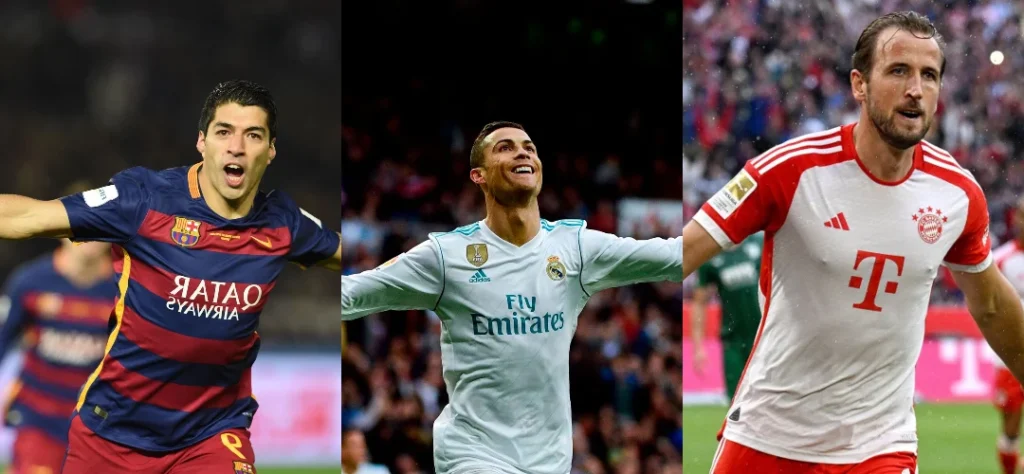
In modern football, the roles of a Striker and a Center Forward (CF) often overlap, leading to confusion among fans and analysts alike. While both positions are tasked with leading the attack, they differ fundamentally in their tactical responsibilities, positioning, and skill sets. By understanding these nuances, we can better appreciate the artistry and strategy behind these crucial roles.
Let’s dig into the distinctions, supported by data-driven examples of prominent players who embody each role.
The deep-lying forward/playmaker (the modern CF)
A Deep-Lying Forward (historically, the Center Forward or CF) is a versatile attacking player who occupies a central position but excels at dropping deep. Unlike traditional strikers who focus predominantly on scoring, CFs contribute more broadly to the team’s build-up play and attacking dynamics. They act as a bridge between the midfield and the attack, often creating opportunities for their teammates while still being a goal threat themselves.
Key characteristics of a deep-lying forward
- Link-up play: CFs are adept at dropping deep to connect with midfielders and wingers. They often operate in spaces between the opposition’s midfield and defensive lines, dragging defenders out of position.
- Hold-up ability: With their physicality and technical ball control, CFs can shield the ball under pressure, allowing their team to advance and regroup.
- Playmaking vision: These forwards frequently provide assists by playing intricate passes, generating “key passes” per game.
- Aerial prowess: Their ability to win aerial duels makes them effective in both attacking and defensive set-pieces.
Key examples
- Karim Benzema: Benzema is the quintessential modern CF. During the 2021/22 LaLiga season, he registered a combined 39 goals and assists, excelling at linking up with teammates, often dropping deep to create space, yet remaining lethal in the box when needed.
- Harry Kane: Kane combines the playmaking qualities of a CF with the finishing instincts of a striker. His ability to drop into midfield, often registering over 2.0 key passes per 90 minutes, and still score prolifically exemplifies his versatility and creative contribution.
- Wayne Rooney: In his prime, Rooney epitomized the CF role. At Manchester United, he seamlessly transitioned between being a goal-scorer and a creator, often sacrificing a high central position for the benefit of team fluidity.
The traditional striker/poacher (the goalscorer)
The primary role of the Traditional Striker is simple: score goals. They are the spearhead of the attack, often positioned high up the pitch to exploit defensive gaps. Strikers thrive on their ability to finish chances, making them the singular focal point of their team’s offensive efforts.
Key characteristics of a traditional striker
- Goal-Scoring Focus: Strikers live for goals. They rely on their sharpness and composure in front of the net to convert chances.
- Positional Awareness: Their movement off the ball is key to creating space and staying a step ahead of defenders. Analytics show pure strikers rank low (often in the 1st to 8th percentile) for “Passes Attempted per 90” but high (often in the 90th+ percentile) for “Non-Penalty Goals” (FBref).
- Explosive Pace: Many strikers use their speed to beat the defensive line and get into scoring positions.
- Clinical Finishing: Strikers are masters of precision, focusing on maximizing goal conversion rates inside the penalty area.
Key examples
- Erling Haaland: Haaland is a pure goal machine. His relentless movement, strength, and clinical finishing make him one of the deadliest strikers in world football. His focus is entirely on touches in the attacking box and generating shot opportunities, which perfectly defines the goal-centric striker role (FotMob).
- Robert Lewandowski: Another goal-scoring phenom, Lewandowski’s positional intelligence and finishing ability have made him one of the most prolific modern strikers. His primary function is to be the final receiver of the ball in the box.
- Cristiano Ronaldo (in his prime): While Ronaldo often started wide at Real Madrid, his function shifted primarily to that of an inside forward focused on goal-scoring, prioritizing devastating efficiency in front of the net over deep link-up play.
- Ruud van Nistelrooy: Known as a predator in the penalty box, Van Nistelrooy had an unparalleled instinct for being in the right place at the right time—a true definition of the “poacher.”
The modern hybrid player
In today’s football, the rigid distinction between a CF and a Striker is increasingly blurred. Tactical flexibility and the rise of systems like the False Nine have created players who can excel in both roles, providing flexibility and dynamism.
Key Hybrid Players
- Lionel Messi (False Nine Role): At Barcelona, Messi operated as the ultimate hybrid. By dropping deep, he pulled central defenders out of position, creating space for wingers, while maintaining an unprecedented goal threat. Across his career, his ratio of goals plus assists per minute is consistently superior to most pure strikers (Messi vs Ronaldo App), solidifying his legacy as the most efficient attacking hybrid in football history.
- Ronaldo Nazário (R9): The Brazilian phenomenon revolutionized the forward role. Ronaldo combined the creativity and vision of a CF with the explosive pace and lethal finishing of a striker, making him one of the most complete forwards of all time.
- Thierry Henry: At Arsenal, Henry seamlessly blended the deep-lying link-up play of a CF with the explosiveness of a striker. He would often start centrally and drift wide or drop deep to create space, only to burst into the box for the finish.
- Zlatan Ibrahimović: Zlatan’s physicality and technical brilliance allowed him to play as both a dominant target man (CF) and a prolific, versatile striker, depending on his team’s tactical needs.
Why understanding these roles matters
For fans, appreciating the nuances between a pure striker and a deep-lying forward enhances the understanding of team tactics and player contributions.
Coaches build their strategies around these roles. As defenses worldwide have become more organized and structured, the pure “poacher” who stays on the shoulder of the last defender often struggles for space.
The rise of the Hybrid forward—a player who drops deep like a CF to pull defenders out, yet possesses the ruthless finishing of a striker—is no longer a luxury, but a tactical necessity for elite teams. This fluidity is why players who master both roles are the most highly valued in the modern game.
Related Opinions
Pep Out To Stop Real Madrid From Winning Another UCL Title
My Weekend Prediction Analysis
The Weekend’s 11.74 Odds You Can’t Afford to Miss
2025-2026 UCL Matchday 3 Predictions
Facebook Comments
If you have a Facebook, you can easily drop your comment on this opinion
About Author


